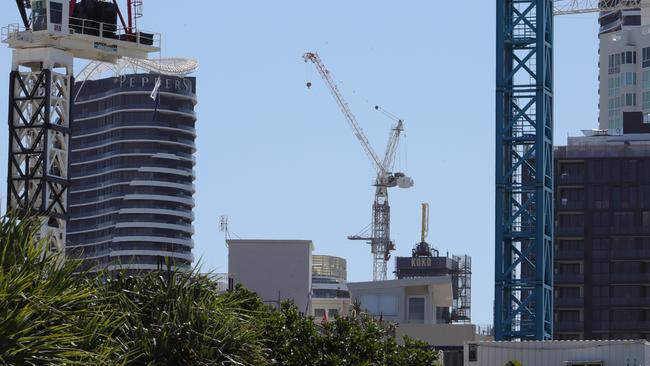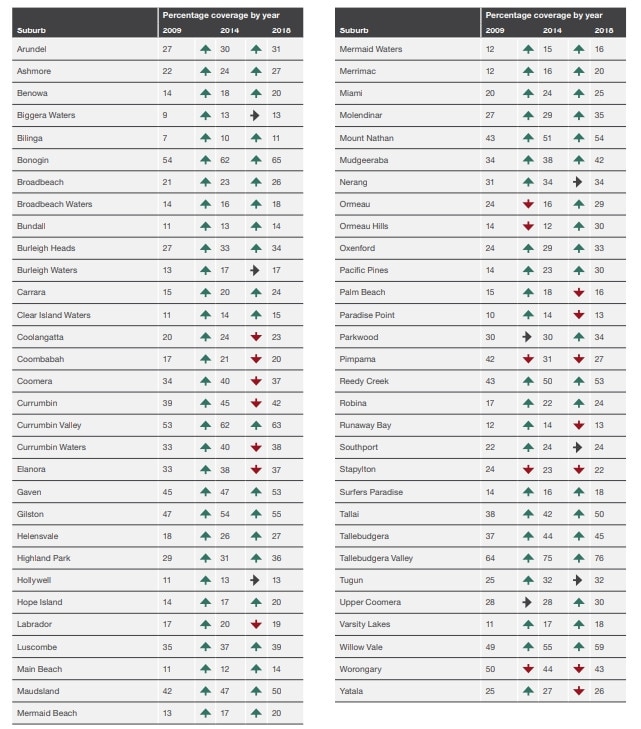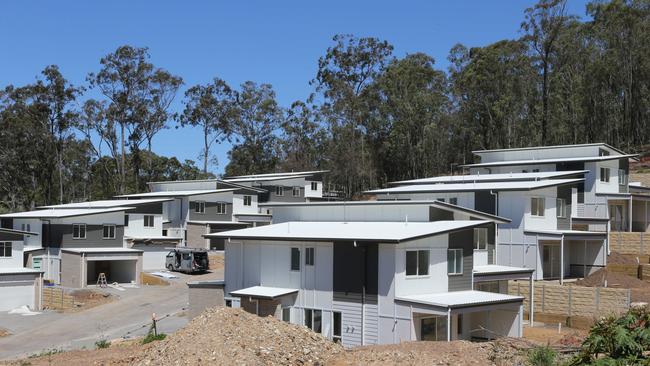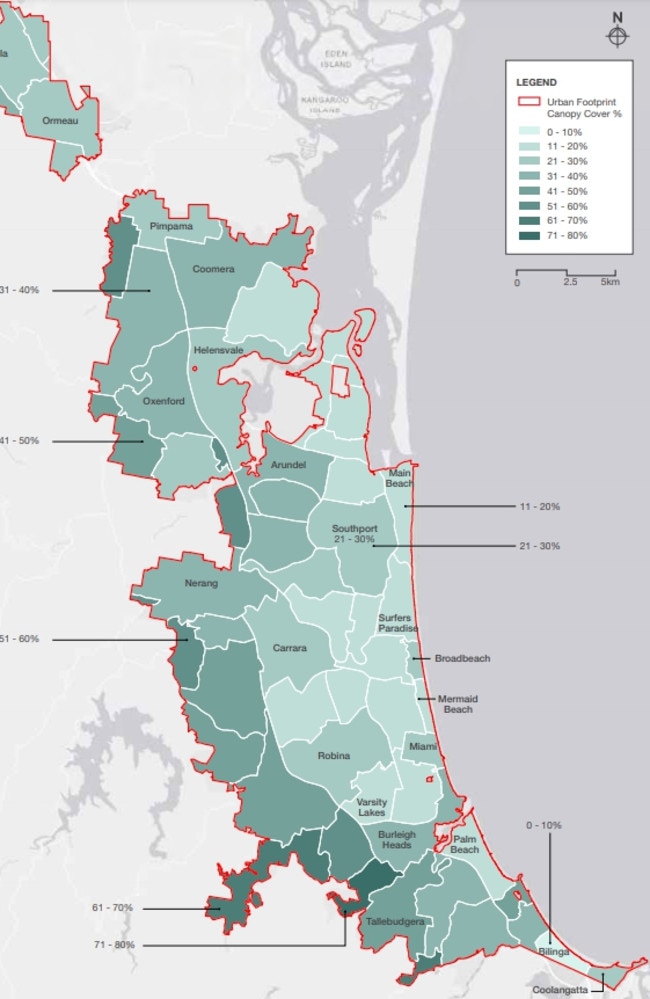Gold Coast’s hottest suburbs revealed as city fights to save trees
A new study has revealed how tree cover has changed across the Gold Coast in the last 10 years, with major declines in suburbs with the most development. SEE HOW YOUR SUBURB RATES
Gold Coast
Don't miss out on the headlines from Gold Coast. Followed categories will be added to My News.
- When the Gold Coast will reach 1 million people
- Location of new Gold Coast heavy rail stations to support growth
A NEW study confirms the Gold Coast is a sunny place — it just needs more trees to combat the impact of global warming in residential areas.
An urban tree canopy report by the Gold Coast City Council tracked the existing tree canopy cover across the urban footprint and how it has changed during the past 10 years.

Mayor Tom Tate at media conference on Tuesday planted the city’s 652,681st tree at the Green Bridge at Evandale.
“We are one of the fastest growing cities in Australia, yet we still achieved this fantastic outcome,” he said.
“We have some challenges ahead in key areas, but I am confident we are all committed to expanding our overall green tree canopy wherever we can.
“There are obvious challenges in some northern suburbs where tree clearing has been necessary to support new, available housing estates.
“I want to see a continued focus on increasing tree canopy and street-lined landscapes throughout our city, providing cool thoroughfares.
“I also want to see greater focus on the habitat corridors we are establishing to give linkages for animals moving across our broader landscape.”
Using high resolution raw airborne Light Detection and Ranging (LiDAR) data from 2009, 2014 and 2019, council was able to map environmental critical corridors.
FULL DIGITAL ACCESS: JUST $1 FOR FIRST 28 DAYS
The differences in suburbs are stark, with Paradise Point the worst green performer, only having 13 per cent canopy cover compared to 65 per cent for Bonogin in the hinterland.
Loss of tree cover between 2014 and 2018 was consistent for high development suburbs on the tourist strip.

The reduced greenery went from 26 per cent to 13 per cent on some street blocks of Palm Beach, from 17 per cent to 11 per cent at Paradise Point , and 34 per cent to 21 per cent at Miami. The drop-off was 21 per cent to 16 per cent at Biggera Waters.
The research found:
* The city’s urban footprint has an average of 32 per cent tree canopy coverage; private owned land 21 per cent, road reserves 3 per cent, public owned land (including open space) 8 per cent, and no canopy 68 per cent.
* The canopy cover is mostly growing within areas of conservation reserve and rural residential lands along the western boundary of the urban footprint.

* Across the total area of public open space lands and critical environmental corridors, the extent and maturity of tree cover has increased over the past ten years. From 2009 to 2014 the maturity of tree cover has increased by 18 per cent, and from 2014 to 2018 it increased a further 14 per cent.
* Tree canopy cover within residential areas has maintained an average of 20 per cent, and decreased in approximately one-quarter of all suburbs over the last five years.

“Residential areas occupy around one-third of the city’s urban footprint and are where most people live and have an opportunity to walk or cycle to key destinations,” the report said.
“A growing body of evidence suggests that these levels may be too low to help mitigate forecast urban warming, nor support healthy, liveable neighbourhoods and attractive, tree shaded active travel trip.”
The council has set a target of 51 per cent native vegetation cover across the city by 2020.
An assessment of Brisbane City Council’s urban tree canopy cover showed that the city’s baseline measured 35 per cent in 2010.

Council has set an urban tree canopy cover target of 50 per cent by 2031 based on resident access to tree shaded footpaths and park pathways
A Melbourne study found that 10 per cent of vegetation cover can reduce daytime surface temperatures by 1°C.
Another study in Brisbane found that during heatwave events 45 per cent of the urban vegetation cover buffered air temperature increases by 3.8°C compared to minimal or zero vegetation cover.


